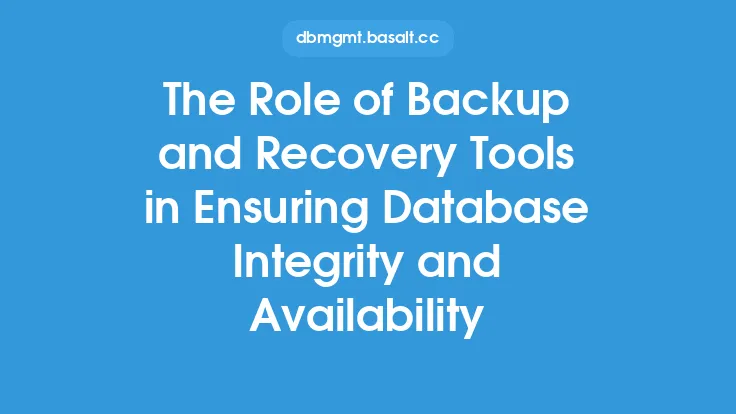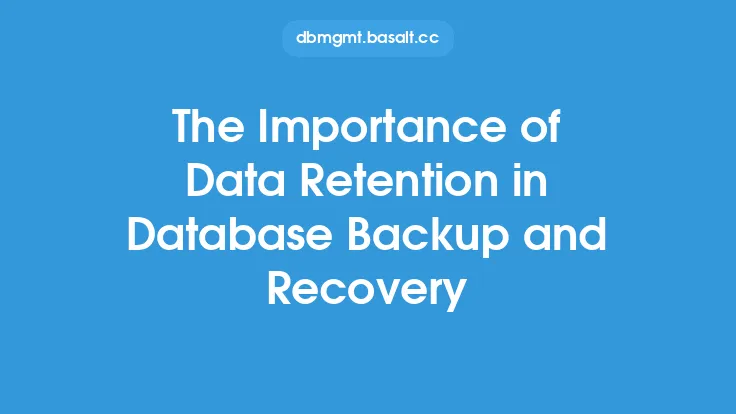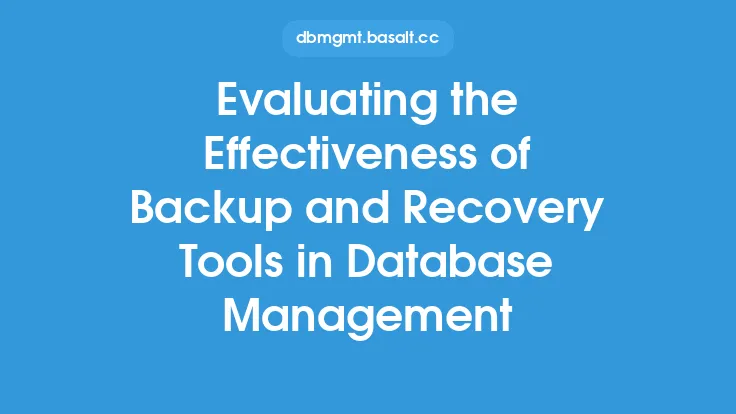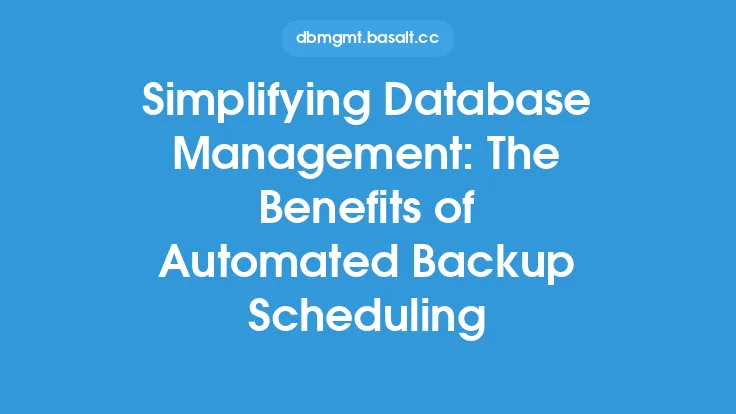In the realm of database administration, data protection and recovery are of paramount importance. The ever-increasing reliance on databases for storing and managing critical business information has made it imperative for organizations to implement robust backup and recovery strategies. One of the most effective ways to ensure data safety and availability is by leveraging automated backup and recovery tools. These tools have revolutionized the way database administrators manage data protection, providing numerous benefits that enhance the overall efficiency and reliability of database operations.
Introduction to Automated Backup and Recovery Tools
Automated backup and recovery tools are designed to simplify and streamline the process of creating backups and restoring data in the event of a failure or data loss. These tools can automatically schedule backups, perform incremental backups, and even test the integrity of backups to ensure they are recoverable. By automating these tasks, database administrators can reduce the risk of human error, minimize downtime, and ensure that data is always available and up-to-date.
Benefits of Automated Backup and Recovery Tools
The benefits of using automated backup and recovery tools in database administration are numerous. Firstly, they provide a high level of data protection, ensuring that critical business information is safe from loss or corruption. Automated backups can be scheduled to run at regular intervals, reducing the risk of data loss due to hardware failure, software corruption, or other disasters. Additionally, automated recovery tools can quickly restore data in the event of a failure, minimizing downtime and ensuring business continuity.
Another significant benefit of automated backup and recovery tools is their ability to reduce administrative burdens. By automating backup and recovery tasks, database administrators can free up time to focus on more strategic and high-value tasks, such as database optimization, performance tuning, and security management. Automated tools can also provide real-time monitoring and alerts, enabling administrators to quickly respond to issues and prevent data loss.
Key Features of Automated Backup and Recovery Tools
Automated backup and recovery tools typically offer a range of features that enhance their effectiveness and efficiency. Some of the key features to look for in these tools include scheduling and automation, incremental backups, data compression, encryption, and testing and validation. Scheduling and automation enable administrators to set up regular backups and recoveries, while incremental backups allow for faster and more efficient backups. Data compression and encryption ensure that backups are secure and take up less storage space, while testing and validation provide assurance that backups are recoverable and accurate.
Best Practices for Implementing Automated Backup and Recovery Tools
To get the most out of automated backup and recovery tools, it's essential to follow best practices for implementation and management. Firstly, administrators should develop a comprehensive backup and recovery strategy that aligns with business requirements and regulatory compliance. This strategy should include regular backups, testing, and validation, as well as procedures for restoring data in the event of a failure.
Administrators should also ensure that automated backup and recovery tools are properly configured and monitored, with real-time alerts and notifications to quickly respond to issues. Additionally, it's crucial to regularly review and update backup and recovery strategies to ensure they remain effective and aligned with changing business needs.
Common Challenges and Limitations
While automated backup and recovery tools offer numerous benefits, there are also common challenges and limitations to be aware of. One of the primary challenges is ensuring that backups are complete and recoverable, which requires regular testing and validation. Additionally, administrators must ensure that automated tools are properly configured and monitored to prevent errors and data loss.
Another challenge is managing the storage and retention of backups, which can be complex and time-consuming. Administrators must balance the need for frequent backups with the need to manage storage costs and ensure that backups are retained for the required period. Finally, automated backup and recovery tools may not be compatible with all database systems or applications, which can limit their effectiveness and require additional investment in custom solutions.
Future Developments and Trends
The use of automated backup and recovery tools is expected to continue growing in the future, driven by increasing demand for data protection and availability. One of the key trends is the adoption of cloud-based backup and recovery solutions, which offer greater flexibility, scalability, and cost-effectiveness. Additionally, there is a growing focus on artificial intelligence and machine learning in backup and recovery, which can enhance automation, efficiency, and accuracy.
Another trend is the increasing importance of data security and compliance, which is driving the development of more secure and compliant backup and recovery solutions. As data protection regulations continue to evolve, automated backup and recovery tools must be able to meet these requirements, ensuring that data is handled and stored in accordance with relevant laws and standards.
Conclusion
In conclusion, automated backup and recovery tools are a critical component of database administration, providing numerous benefits that enhance data protection, availability, and efficiency. By understanding the key features, best practices, and common challenges of these tools, administrators can ensure that their databases are properly protected and recoverable in the event of a failure or data loss. As the demand for data protection and availability continues to grow, the use of automated backup and recovery tools is expected to play an increasingly important role in ensuring the integrity and availability of critical business information.





